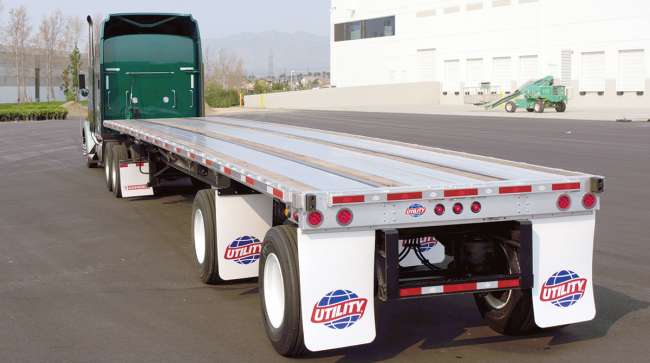Spot Market Activity Still Bustling One Month After Devastation of Harvey, Irma

One month after two devastating hurricanes ripped through Texas and Florida, spot market activity remains hectic across the country, setting records along the way.
For the week ending Sept. 23, DAT Solutions reported that dry-van volumes actually hauled on the top 100 lanes in the United States hit an all-time high, with a 6.5% increase over the prior week’s volume and a 22.5% surge compared with the same week in 2016. The national averages for truckload spot rates for trips of 250 miles or more hit two-year highs: Dry van was $1.94 per mile, flatbed $2.25 per mile and refrigerated $2.18 per mile. Year-over-year, spot market prices on the DAT load boards are more than 20% higher than a year ago, when van rates averaged $1.62 and flatbeds cost $1.88 per mile. Reefer rates got a 16% bump last month from the $1.91 per mile rate in September 2016.
Truck capacity hasn't shown many signs of loosening, so freight rates have stayed high even 5 weeks after Harvey. https://t.co/dm6A1MTXGe pic.twitter.com/5yPBfrzn5u — DAT Solutions (@LoadBoards) September 27, 2017
“Somebody asked me, ‘When will these rates settle down and return to normal?’ and I responded, ‘I think we just redefined what normal is,’ ” DAT industry analyst Mark Montague said. “This may linger into the [electronic logging device] effects and will last at least until February,” when seasonal demand typically recedes.
Truckstop.com data also show elevated pricing with dry van, flatbed and reefer rates nationally nearly 30% higher than year-ago levels and about 30 cents above the rolling five-year averages. In Week 38, dry-van rates averaged $2.23 per mile, flatbed at $2.27 and reefer at $2.65.
Truckstop’s Market Demand Index was 45 in the most recent week available, a record. In 2014, the MDI averaged slightly above 25 during the favorable truck environment. The index reached 35 during the summer peak this year and soared further after Harvey and Irma. Anything greater than 25 is considered a market favoring motor carriers, the group states.
Are we in for a tough time in early next year? Noel Perry says yes. See why. https://t.co/xH751Tly2g #trucking pic.twitter.com/coAoIHlNET — Truckstop.com (@trckstopdotcom) October 2, 2017
“After Hurricane Katrina, rates were up more than 5% nationally for two consecutive quarters. Rates were weak before, then they skyrocketed,” Truckstop.com Senior Economist Noël Perry said. “After Sandy, rates were up 3% to 4% through the quarter. Will the seasonal effect of these storms move up the price inflation that we already expected from ELDs? It’s likely, in the aggregate numbers, the effects will still be apparent by the end of November.”
Regionally, DAT reported that dry-van volume soared 52% out of Atlanta through Sept. 23, with more than 7,000 loads per weekday offered on the company’s load boards in the initial two-week period because of emergency freight headed to Florida and pent-up demand from delayed shipments pre-Irma. Industry experts say that most Florida-bound freight stops in Atlanta before heading into the Sunshine State.

Montague
“Distribution centers in the Northeast, such as Harrisburg, Allentown and Philadelphia, Pa., and Columbus, Ohio, have all seen higher volumes of freight out of the region. Usually, freight heads into the Northeast to serve the population centers. But in this case, when companies run out of items in the Southeast, they are sourcing freight from adjacent regions,” Montague said.
In Texas, entering the final week of September, inbound flatbed loads were nearly triple and dry-van loads were double the amount compared with the summer averages, according to Truckstop.com. In Houston, loads across all modes were up about 150% in the past couple of weeks versus before Hurricane Harvey.
In Florida, Truckstop.com reported inbound flatbed loads were quadrupled, and dry-van loads were up 50% over this summer’s average.
Perry said that year-over-year comparisons were significantly higher, but the data is skewed because the spot market was so weak one year ago. He also said truck utilization is getting so high that there could be significant capacity-related delays to shippers should further tightening occur in 2018. FTR researchers currently peg the utilization at above 98%, but Perry warns about the consequences of the hurricanes temporarily pushing utilization above 103%.
“When you get above 100%, you get into a situation when some loads are delivered substantially late. You have actual, physical shortages, not just tightening, not just making six phone calls instead of one, but making 13 phone calls and not finding a truck for three days,” he said. “If we weren’t at a seasonal low point before the holiday rush, I think we’d be getting some supply chain failures right now.”




